5 popular types of carpet – how to choose the best for your home
The best types of carpet for your home come down to style and how they are made. These are the most popular types, plus different fibers and more to help you choose.


Finding the best types of carpet for your home can be quite the task. When choosing yours, you need to consider their construction, what they are made of and how they look – of course – to understand whether they will keep your feet cozy and stay in good shape for a few solid years.
Often considered one of the best types of flooring for a bedroom, carpet also works well in a living room and other convivial spaces where wood or laminate wouldn't quite cut it, both style and cost-wise...
Jemma Dayman, Carpetright Buyer says, 'A stylish carpet brings a warm and inviting atmosphere to a home and when looked after can retain its quality for years.
Deciding when to replace a carpet will depend on a number of factors including carpet quality, area laid, number of occupants and how it was looked after. With these considerations and particularly when allergens are an issues it is likely your carpet will need to be updated every 5-10 years.'
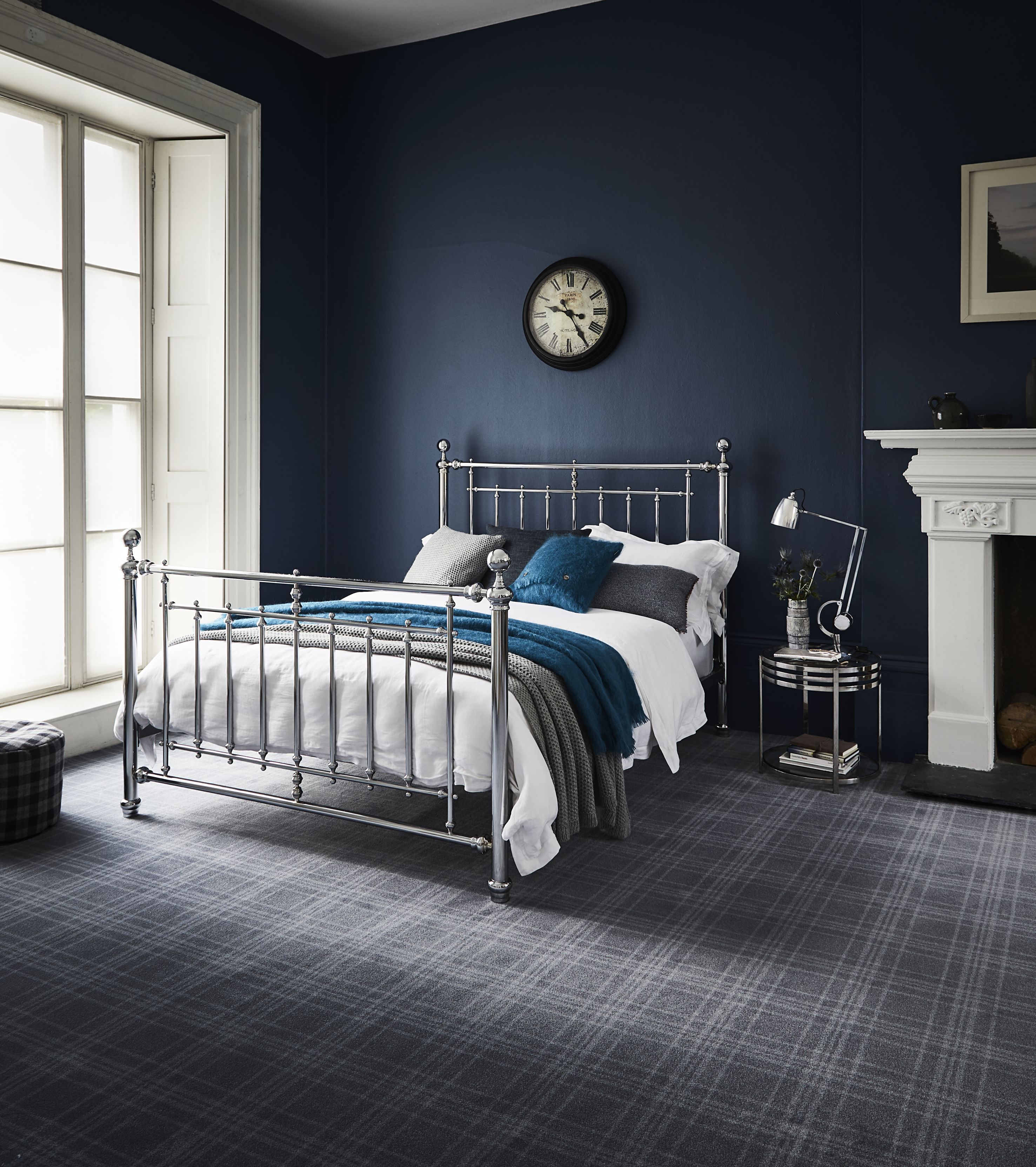
Get the Valentina Patterned Carpet in Blue Plaid from Carpetright
- Maintain your carpet with one of the best vacuum cleaners.
How to choose carpet for the home
When finding the best type of carpet for your home, whether it's for the living room, bedroom or family room, you need to match quality with comfort and your budget. Consider the room you're laying it in, how much foot-traffic there will be, exposure to stains (hello pets, kids and Saturday night wine spills) and then think of the feeling you want to create in that room also.
Savannah Phillips, Interior Designer for The Knobs Company says, 'Carpeting is one of the most common selections for flooring in homes. Carpeting used in a home helps with insulation and adds padding underneath for a good sound barrier and less stress underfoot.'
Main types of carpet style and construction
- Woven: Woven carpet is made using a labor-intensive method whereby colors and decoration are woven in rather than printed onto the surface. A high-end product, it is usually made from 80 to 100 per cent wool, and it comes in two forms: Axminster, often patterned with a velvet finish, and Wilton, which can be plain or textured.
- Tufted: Tufted carpet is the most popular type, with a more varied choice of styles. It is made by punching the pile yarn into a backing fabric using needles, which produces cut and loop pile designs.
- Cut-pile: There are lots of variations of cut-pile carpets. These are sheared, revealing the fiber which makes them softer and a popular choice all over the home where comfort is key.
- Loop-pile: The more practical carpet type as it's durable and often more stain resistant. The fibers are twisted into small loops, giving them a low profile.
Main types of carpet materials
When it comes to choosing the material for your carpet, the main consideration is whether you prefer natural or synthetic. Both have their benefits, so it is mainly down to your personal choice – and budget.
Wool: Wool has long been used in carpet manufacturing and is still recognized as the best fiber for carpet. It has a luxury feel and a low propensity to soil. It is also naturally flame-retardant. Wool is resilient, soft and warm, and retains its appearance. Both 100 per cent wool carpets and mixes with man-made fibers in an 80/20 or 50/50 ratio are available. The latter two may be better for busy thoroughfares like halls and stairs.
Get small space home decor ideas, celeb inspiration, DIY tips and more, straight to your inbox!
Nylon: Don't rule out synthetic, though: extremely hardwearing, with a high resistance to abrasion, nylon is easy to clean. It’s often used in an 80 percent wool and 20 per cent nylon blend.
Polypropylene: This is another good option; highly stain-resistant, man-made fiber with good abrasion resistance. It’s typically used in twists, loop piles and Saxony types.
Floorcoverings made from plant fibers are great for creating a relaxed and rustic effect, and can be fitted wall to wall, just like carpet. Sisal is hardwearing enough to be used in high-traffic areas around the home, including living spaces, hallways and stairs.
What is the best type of carpet?
The following are popular carpet styles for different reasons. Some have durability and stain resistance in their favor, like good old frieze and Berber/loop pile carpets, while something more plush underfoot may be more appealing to other households.
1. Berber carpet/ level loop pile
Berber carpets are really popular because they come in an array of finishes and are constructed to last, resist stains and feel comfortable underfoot. The shorter loops means that it will work well in high-traffic areas like hallways.
'I consider the Berber carpet the most durable of all styles. It is more resistant to stains without compromising your budget. Its texture is absorbent to leakages and spills that won't sink to the floors. However, it could be a little tricky to clean depending on its fiber materials.' Says James Kalim founder of Only Silent.
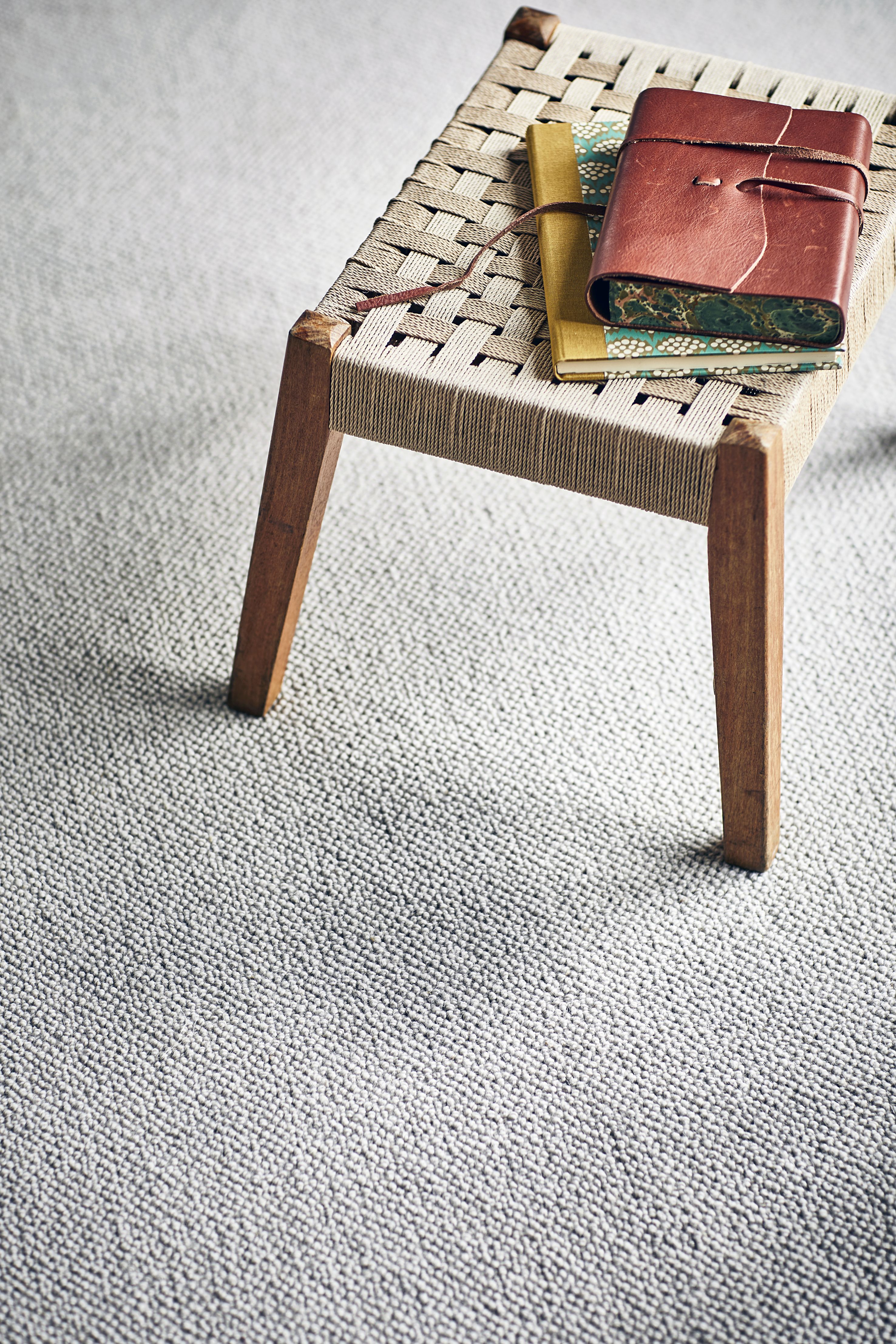
Find the Rowan Wool Carpet at Carpetright
2. Shag carpet
The unruly appearance of shag carpets makes them a winning choice for those that are choosing comfort above all. It's a deep cut pile carpet which is not so easy to maintain, and often seen in rug form.
'Some areas of the home are relatively low traffic space that allow for the use of shag carpeting which feels extremely soft underfoot.' Adds Phillips.
3. Plush pile
It's in the name, and this type of carpet feels really lovely underfoot. It's a type of cut pile carpet, with very short fibers that create a velvet-like texture. 'Plush pile carpets are suited for bedroom and living room areas since it is soft and easy to clean. This type of carpet creates a cozy and visually appealing style to compliment the overall look of those areas. However, there is a risk of deformation and watermarks in its textile in the long term of use.' Adds Kalim.

Carpetright Country Living Dakota Wool Carpet, £364.99 per sqm
4. Saxony
Saxony features longer, more textured fibers to create a really cozy feel underfoot also. Be wary of using these in space with heavy furniture where you may want to move things around as it dents fairly easily. It's a great choice of carpet for the bedroom or a living area.
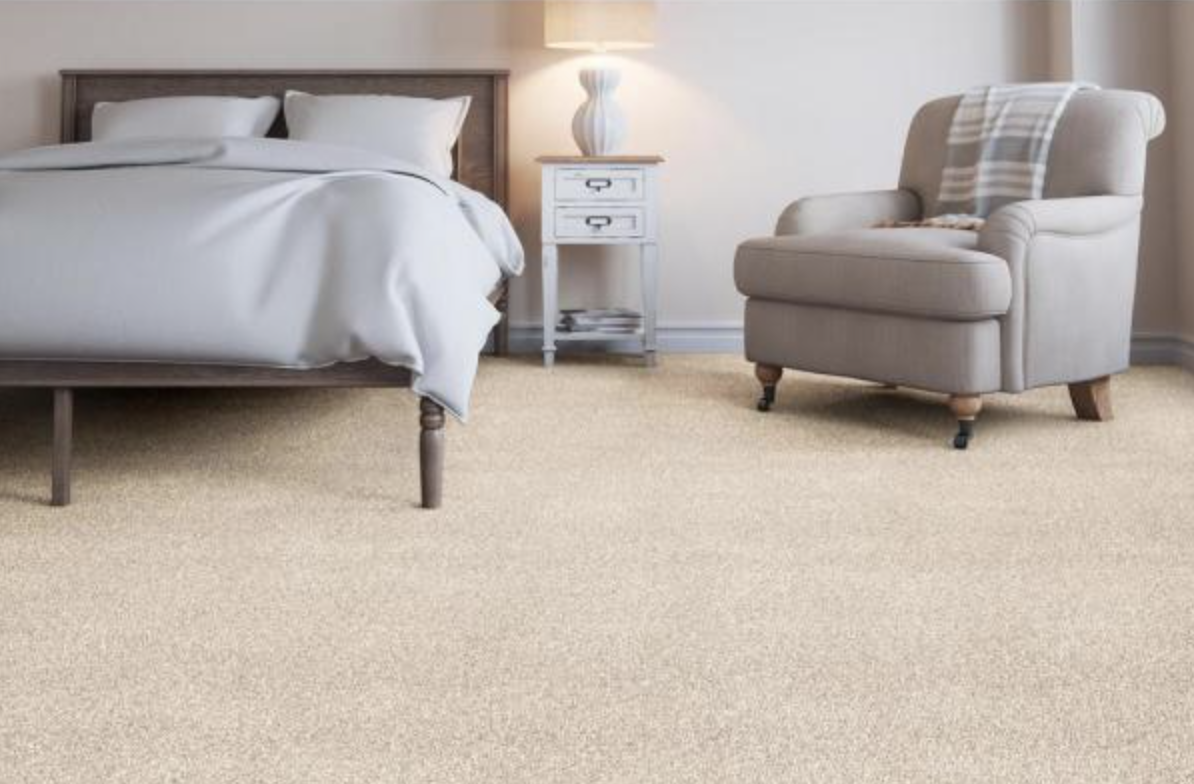
5. Frieze carpet
This is a fairly dense cut pile carpet which is recognizable by its twisted and fluffy textured finish. Long fibers go through a tight twisting process which makes them thick in texture and durable also.
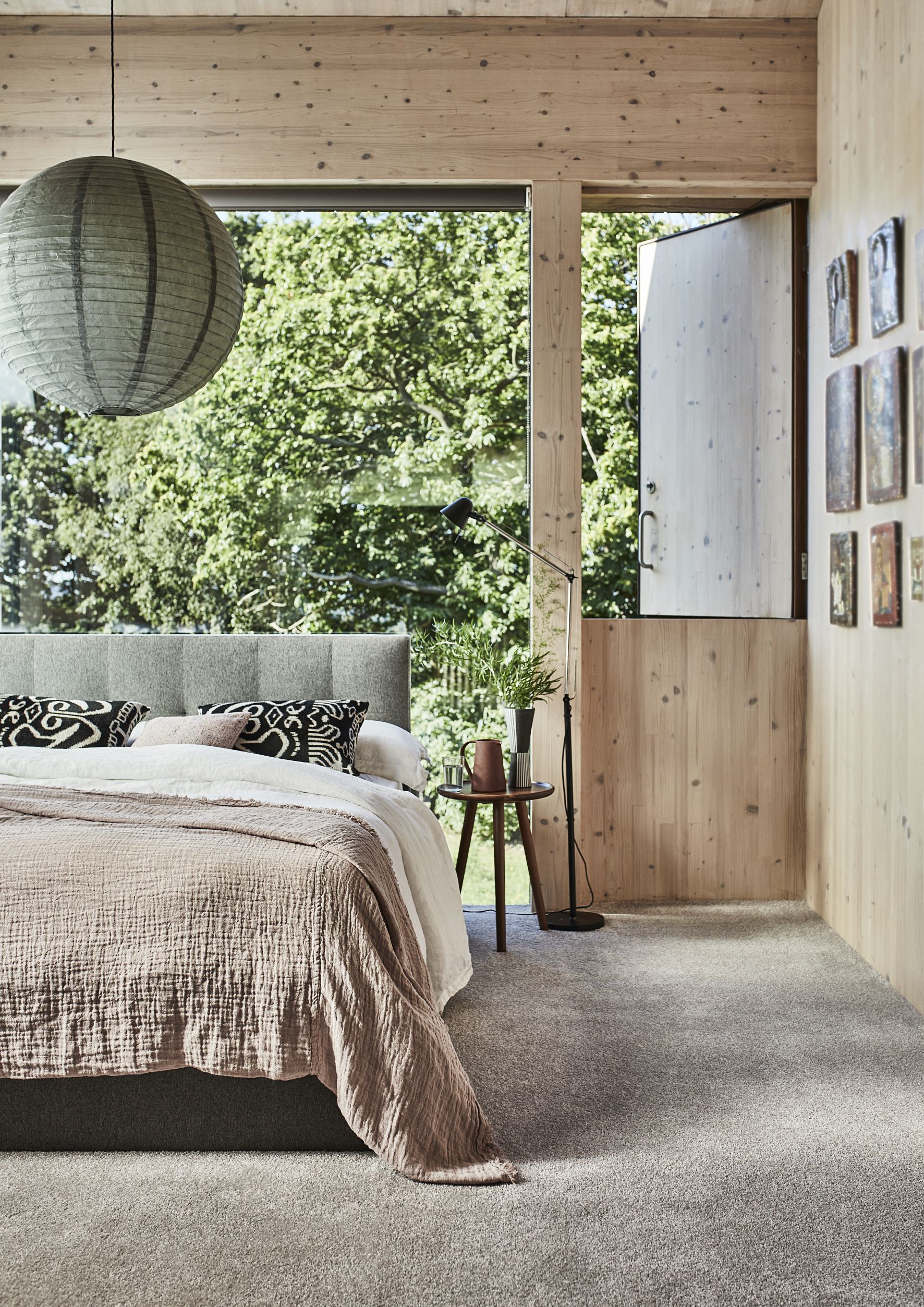
Where’s the best place to buy carpet?
We would recommend that you always buy from a reputable retailer. If you are UK-based, The Carpet Foundation has 700 members who operate under a Code of Practice approved by the Trading Standards Institute.
You can expect a written quotation, so there are no nasty surprises on your bill (such as charges for moving furniture), a protected deposit, and free conciliation if you experience any problems.
If you are in the US, Home Depot and Lowes have a great selection to suit all tastes and budgets.
Which types of carpet to lay in which rooms?
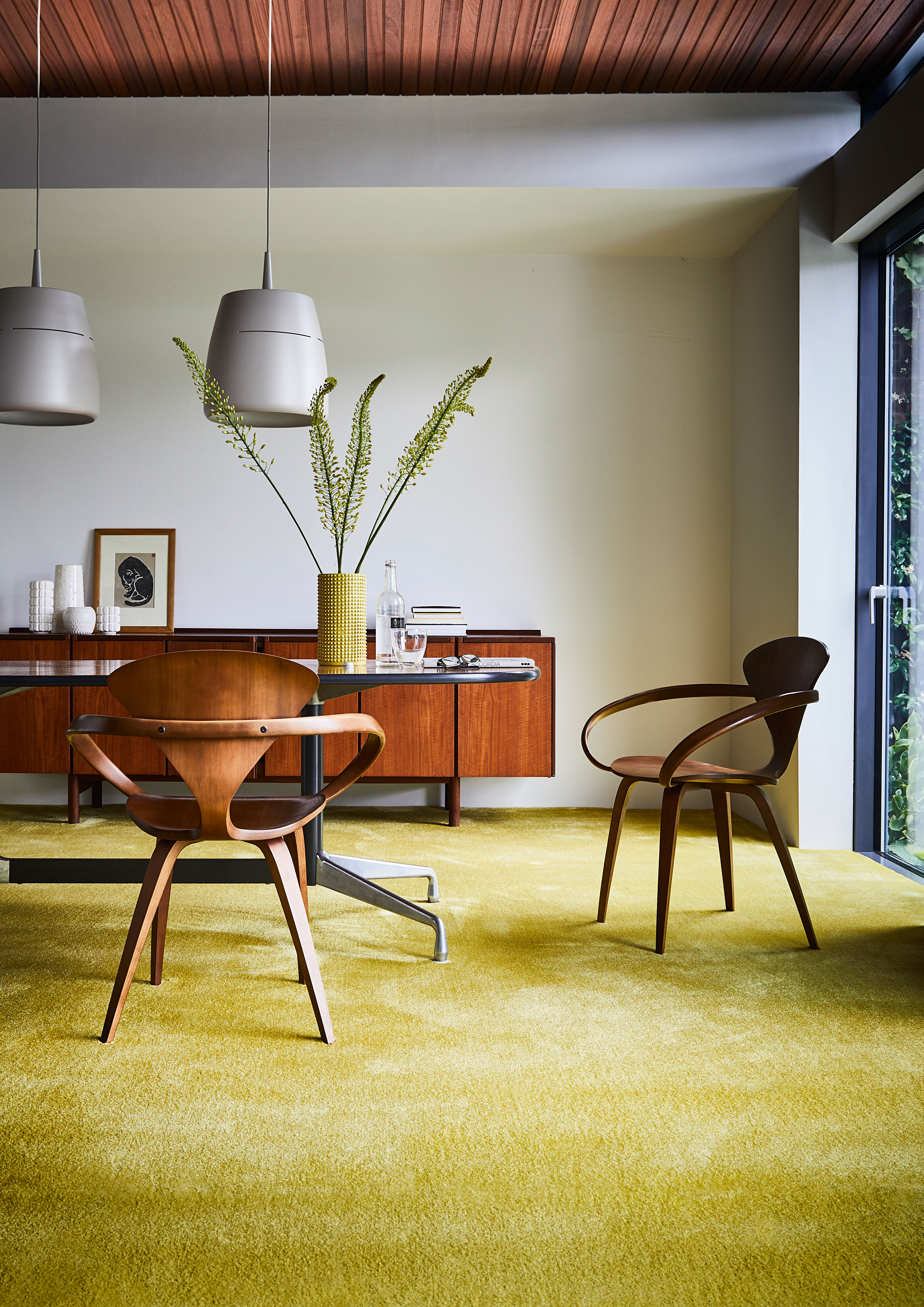
Synergy in Teksilk in Gold Coast, £85 per m2, Elements London
Always have your carpet installed professionally; it’s a real skill and should be fitted in accordance with BS5325 if you're in the U.K.– the British Standard for the installation of textile floorings.
Carpet can be laid in any room, but is not recommended for kitchens, and most people avoid it in bathrooms. Halls, stairs and landings take the most wear and tear, so it is advisable to lay a hardwearing design in these areas, with at least 80 percent wool content.
You can be a little more indulgent in bedrooms, for example, that aren’t used as much. Consider man-made fibers such as polypropylene for kids’ rooms and dining spaces as it’s highly stain-resistant. It’s also worth noting that most carpets are suitable for use with underfloor heating, but it is advisable to check your choice with the heating system manufacturer.
You can also find more tips on underfloor heating in our comprehensive guide.
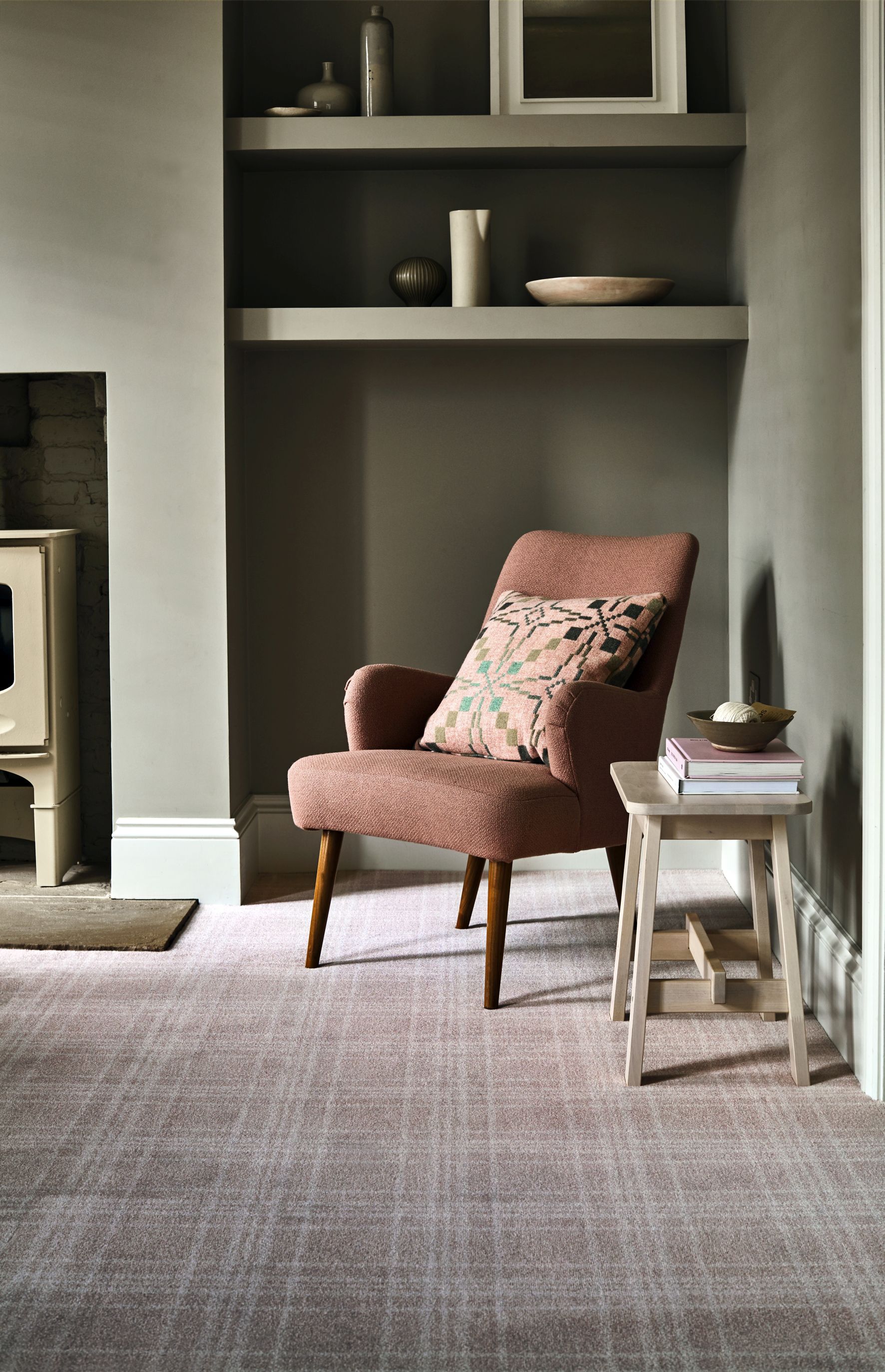
Get the Valentina Patterned Carpet in Pink Plaid from Carpetright
Choosing a runner for your stairs
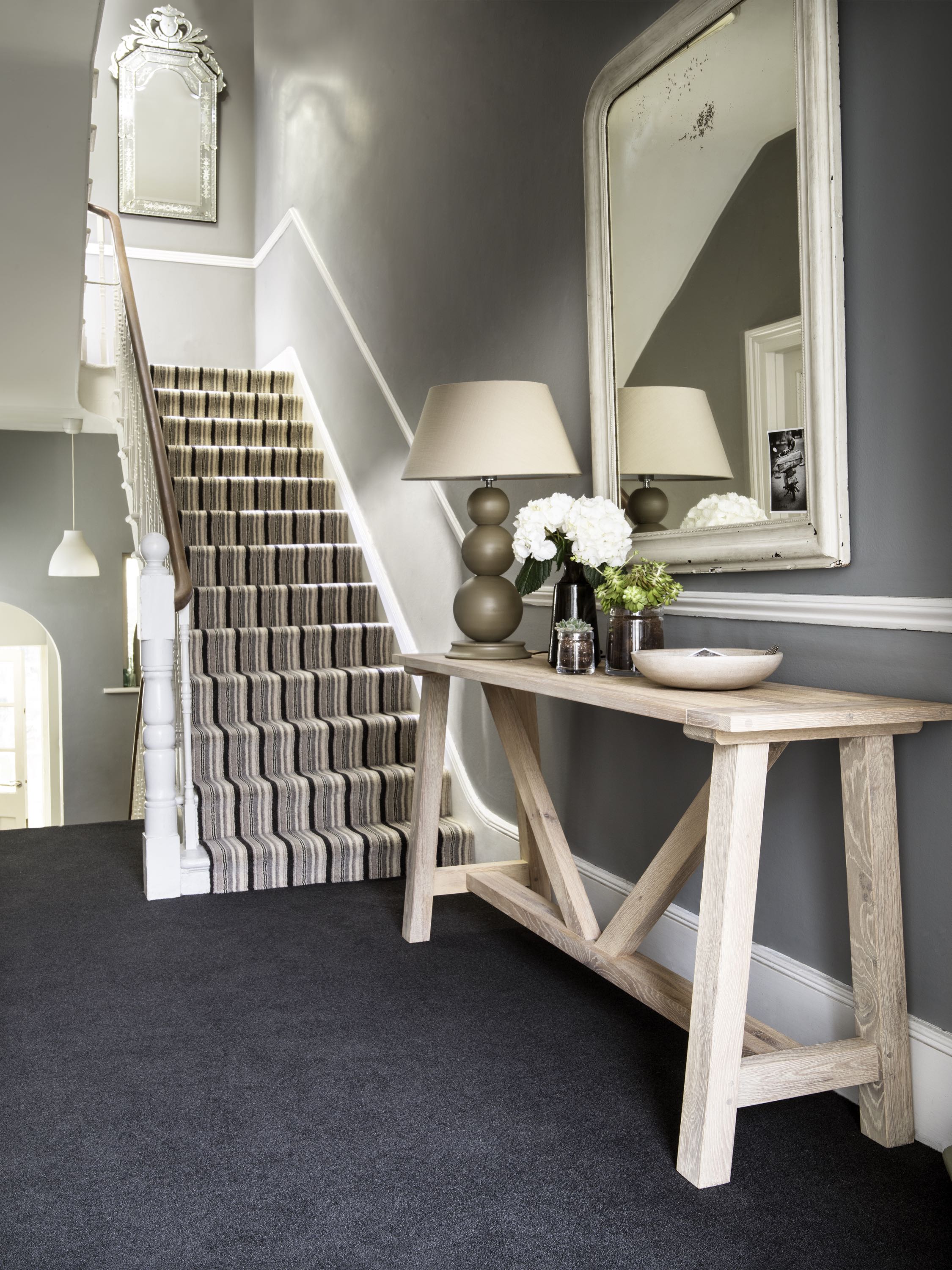
When it comes to carpeting stairs, there are two main types of carpet suitable: flatweaves and Wiltons.
Wiltons are dense with a smooth, velvety feel while flatweaves are more flexible, making them an advisable choice for winding staircases. Fitting a flatweave carpet to winding stairs is a difficult job which should be done by a professional.
Choosing a pattern for your stair runner
In terms of color, go for bold stripes or a pattern to make a statement, or neutrals for a more subtle finish. Choose your runner before you choose your paint color, as you can then opt for a color that draws out the more subtle tones of your runner.
The rooms that lead off from the hall and stairs ought to have a similar color scheme, though not necessarily the exact same shade.
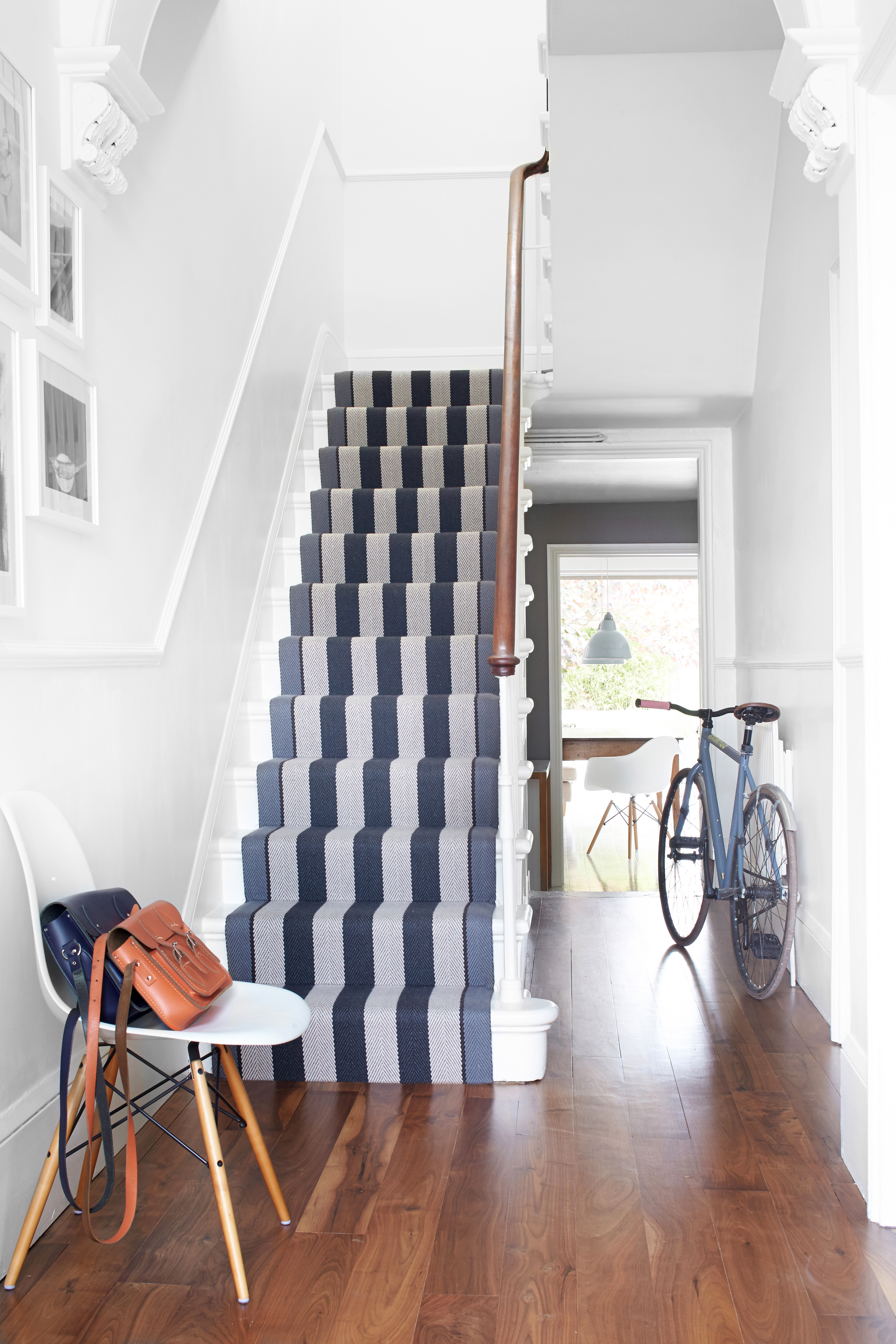
How to lay a runner on stairs
When laying a runner on the stairs, leave a minimum of 5cm up to a maximum of 15cm wood/paintwork showing on either side of the runner. Anything in-between is really down to personal preference.
Fitting runners on landings
A bordered or non-bordered flatweave runner can be fitted on landings by way of mitered edges. Quarter and half landings can also be fitted in the traditional overlay fashion where one length of flatweave is laid perpendicular to the other. The seams and joins are either sewn by our skilled fitters on site or prepared in the workshop prior to dispatch.
For a larger landing you may want to consider a fitted ‘wall to wall’ option. Skilled workers in the Roger Oates workshop hand sew the lengths together to create larger pieces that can then be fitted in a similar way to standard broadloom carpet.
What is the best carpet material for pets?
In a word: synthetic. Both nylon and polypropylene are excellent carpet materials for homes with pets: they are durable and stain-resistant, but most importantly, they are less attractive for scratching. Both dogs and cats gladly sink their claws into soft wool carpets, so avoid these in a house with pets, and definitely avoid anything with silk. Sisal is also not ideal, as it's very attractive scratching material (cat scratching posts are typically made from it). Color-wise, it doesn't really matter: just invest in a vacuum for pet hair and vacuum regularly.
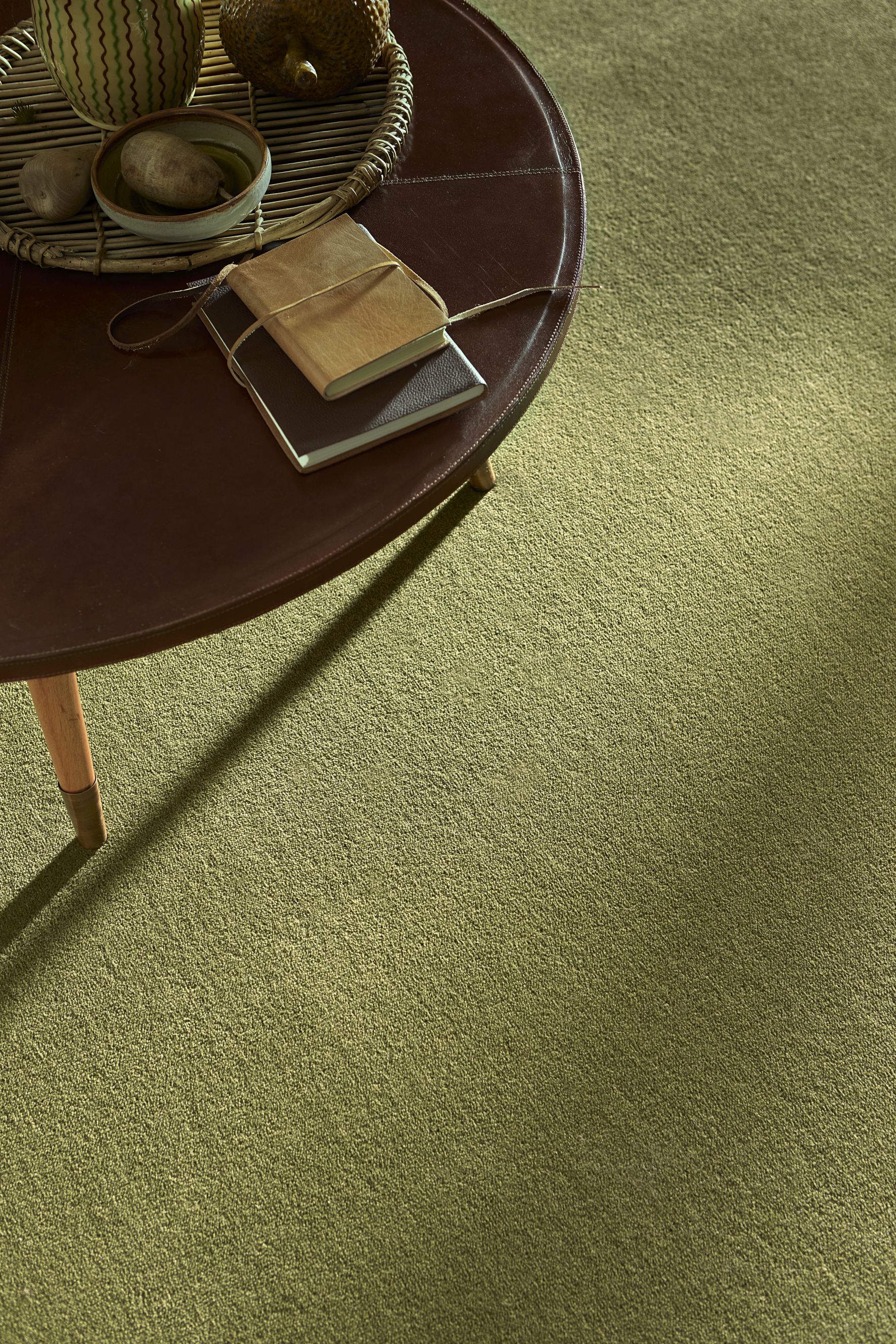
Westex Penultima Carpet In Olive Green, £35.99 per sqm, Carpetright
How much does carpet cost?
'Carpet is relatively inexpensive compared to other types of flooring that can be used in a home it can be about $2 to $3 per square foot installed. Unfortunately, with the low price come a few cons to the product. Certain liquids can stain the carpet which is very difficult to clean out. Not only that but carpeting can trap dust and allergens if it is not regular vacuumed.' Says Philips.
In the UK, there's a huge range in prices between the different types of carpet. You can buy a corded foam-backed carpet from as little as £2.99 per square meter from stockists such as Carpetright, with costs at some high-end suppliers reaching over £100 per square meter. On average, you are looking at around £20 per square metre for polypropylene carpet and £30 per square meter for wool-rich carpet plus underlay and fitting.
How to care for your carpet?
To keep carpet in the best condition possible, it's important to vacuum regularly – at least twice a week. Quickly tackle any accidents to remove stains while you still can.
Our guide to how to clean a carpet provides full instructions. For a professional service in the UK, contact the National Carpet Cleaners Association.

Anna is a professional writer with many years of experience. She has a passion for contemporary home decor and gardening. She covers a range of topics, from practical advice to interior and garden design.